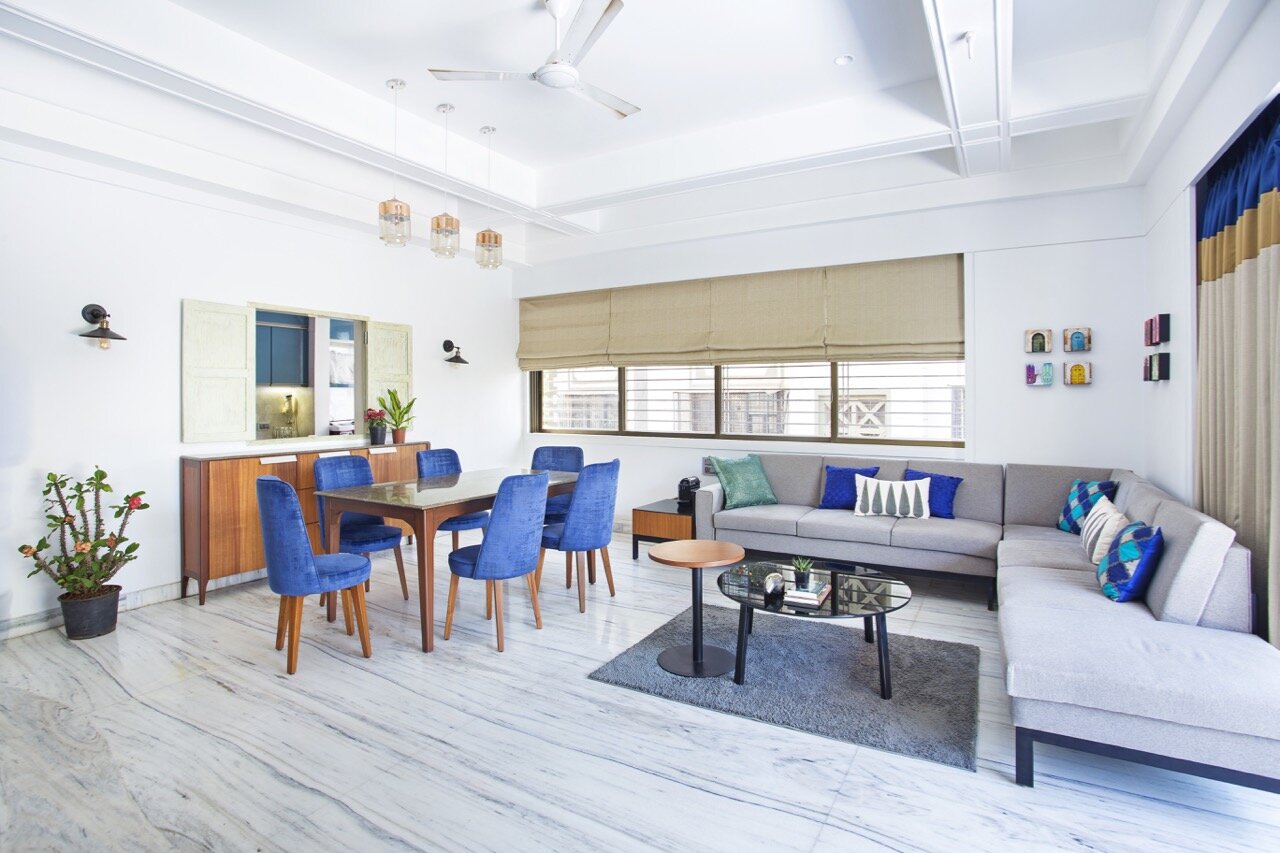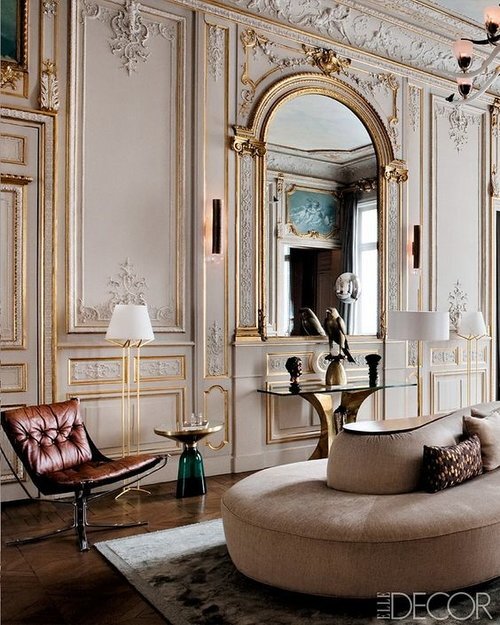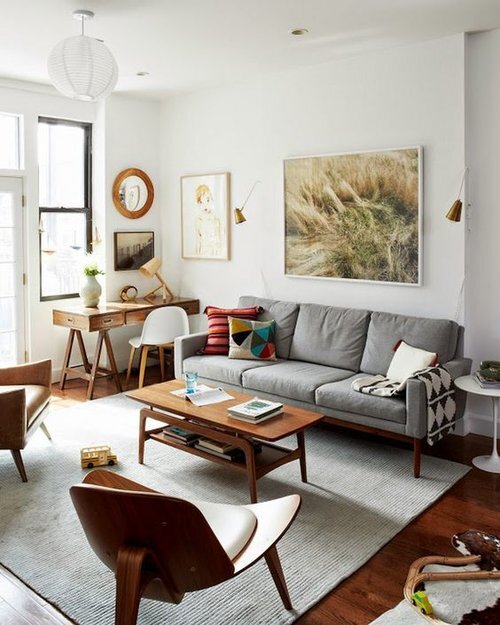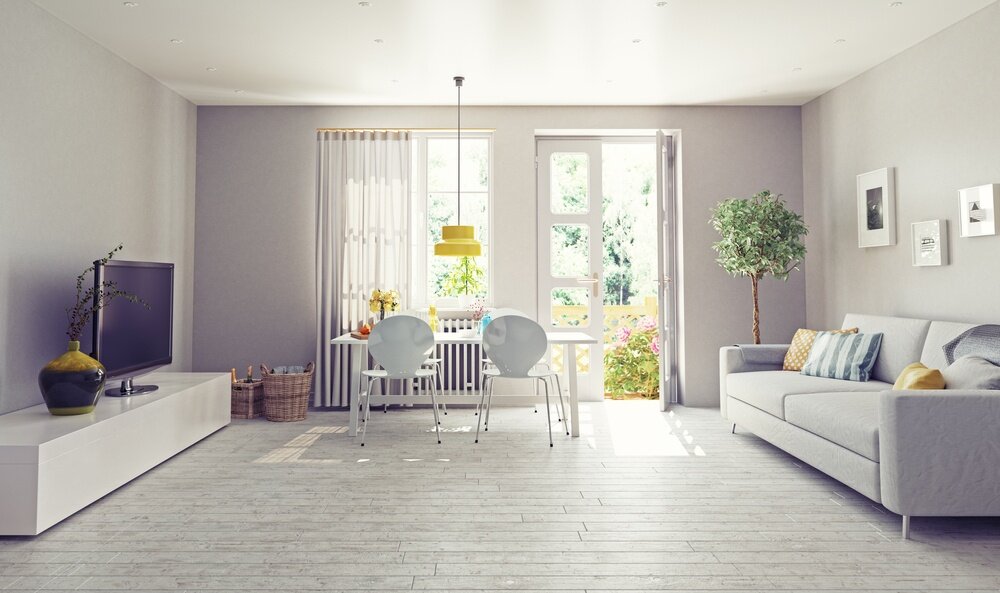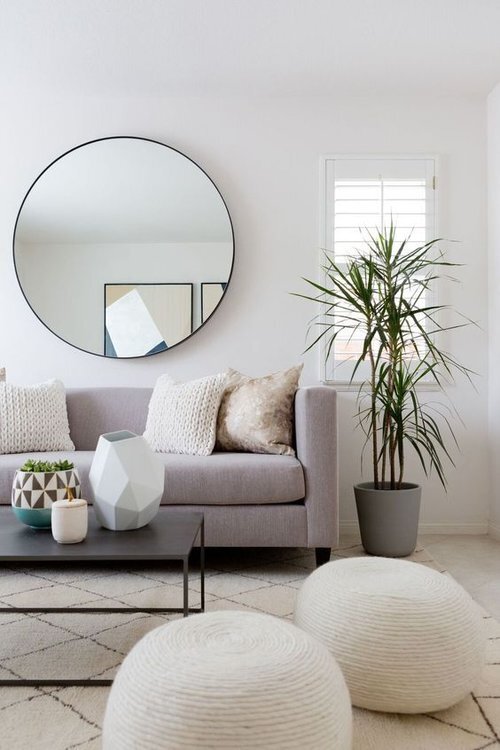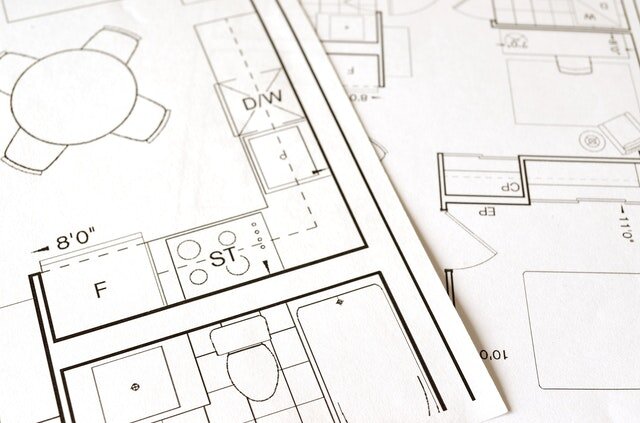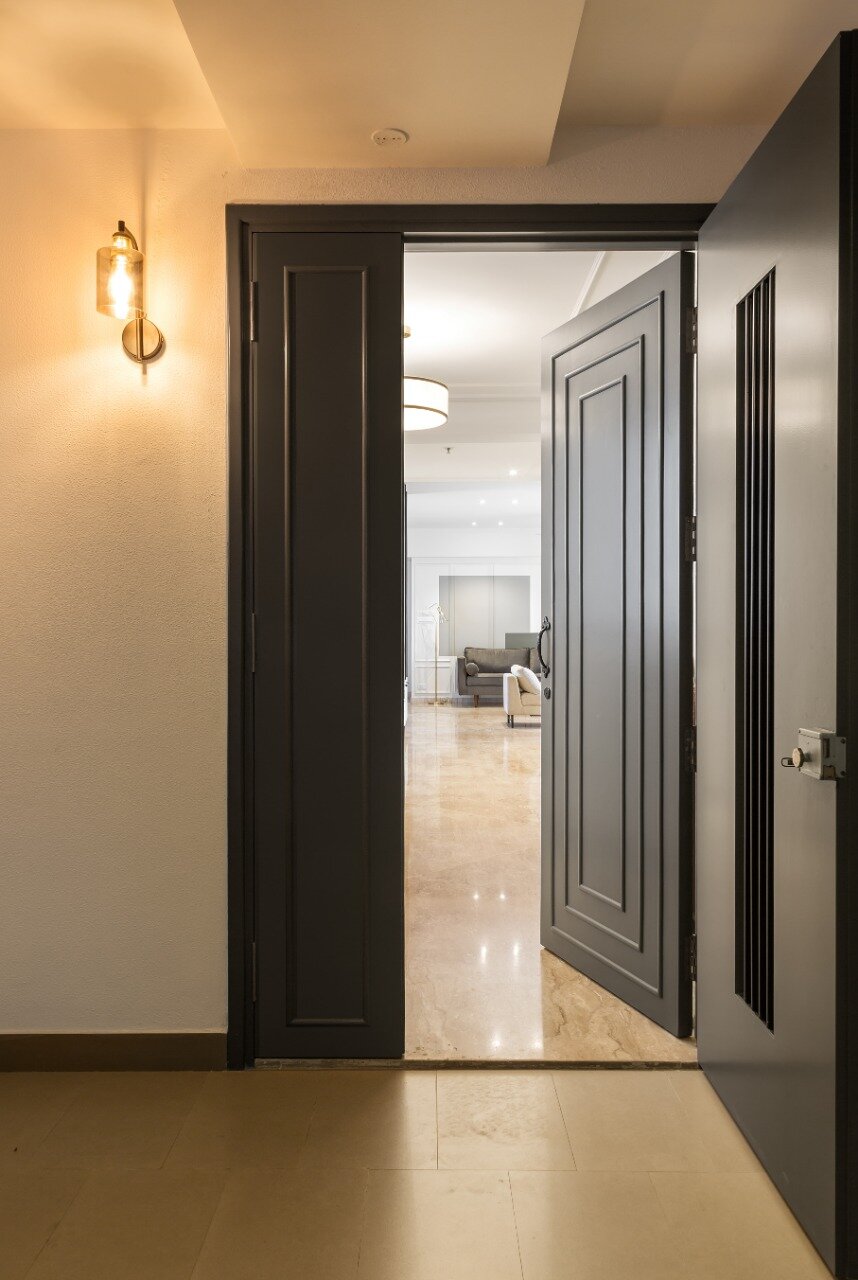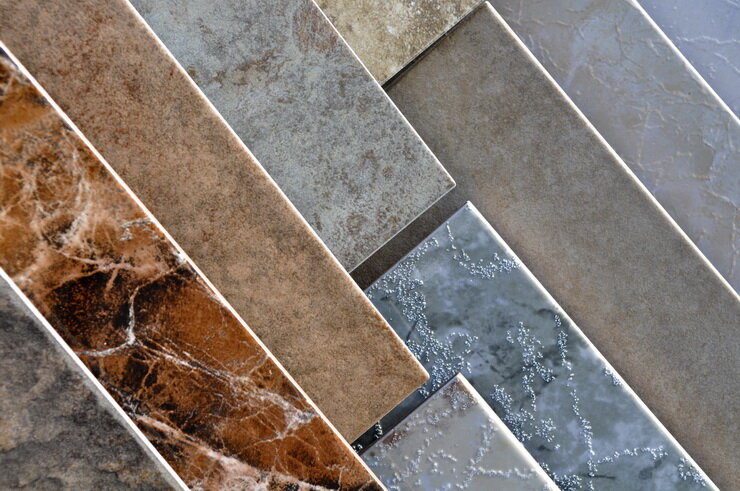One of the busiest metros in India, Mumbai is known as the commercial capital of India. Culture, customs, and lifestyles from all over the country and the world blend and coexist in Mumbai.
Mumbai’s cityscape holds together a variety of architectural styles, ranging from majestic colonial buildings to sleek and stylish ultramodern glass and steel structures.
Quite naturally, when someone looks to build their abode in Mumbai, they have dreams in their eyes and visions in their mind. So, it is important that their homes resonate with these visions and these stories.
When it comes to planning and designing the ideal home space, people look for interior designers in Mumbai who can understand their thoughts and bring their visions to life. However, a lot of other considerations like budget, space, style, and other preferences have to be kept in mind while hiring interior designers in Mumbai.
On This Page You Will Find:
Critical Things to Know when Renovating an Old and a New Construction
Interior Design Styles Recommended by Interior Designers in Mumbai
How to Decide Between a Contractor or an Interior Designer in Mumbai?
Design + Execution vs End-to-End: What Interior Design Model is Recommended for Mumbai?
Key Factors Considered by Interior Designers in Mumbai when Designing your Space
#1. Guide to Hiring an Interior Designer in Mumbai
#1.1. Four Key Things to Do Before Hiring Interior Designers in Mumbai
While the excitement of getting a glimpse of how your home will look like is understandable, it’s time to take a deep breath first. Here are certain prerequisites to scouting the perfect interior designer. Let’s take a look:
a. Determining Your Budget
The most influential factor in getting your home designed is the budget you’d want to spend on it. If you are new in Mumbai or have no prior experience in this field, it can be puzzling at first to decide how much you should allocate for the job.
The easiest way to do this is to look around, get in touch with your friends and family, and ask around in the neighbourhood. Next, you can check out some of the interior designing blogs to get a rough estimate. A lot of interior designers have a cost calculator function on their website, which can give you a good starting point to fix your budget.
b. Prioritising Rooms Basis Your Budget
Now that you have decided on the budget, it’s time to visualise how you want your home to look like. This will eventually help you prioritise rooms/areas in your home and help you to make a rough allocation of your budget for each room. This is the first step to having a concrete plan for your home.
c. Finding Your Style
Modern, mid-century, minimalist, contemporary, boho...there are an abundance of home interior styles to choose from. But a lot of times it can be difficult to decipher which style will work for you. Space, budget and personal preferences need to be considered here.
From wall colours and lighting to carpets and furniture, it is the combination of every element that gives the home a unique style.
d. Doing the Research
Referrals from relatives, friends, and neighbours are always a good way of scouting interior designers, but the value of proper research, both online and offline, can never be overstated. It is good to start with multiple firms and individuals and let your research help you out with the shortlisting.
#1.2. Key Things to Look for When Freezing an Interior Designer in Mumbai
Are you wondering what parameters to look into while hiring an interior designer in Mumbai? We’ll break all of them down for you.
a. Experience
While experience cannot always triumph innovation and creativity, it is still a sign of trust and credibility.
b. Portfolio
Taking a look at the portfolio of the designer can help you assess their work. Look at the models and designs showcased on their website and their past completed projects, and it will give you a clear picture of their quality and skills.
c. Style of Work
Judging from their portfolio, you will also get a fair idea of the design styles they specialise in. An important point to note here is that the designer should be ready to understand your vision of the home and open to customisation.
d. Feedback and Reviews
A vital thing to look for during your research is the customer feedback and reviews about the particular designer or agency. Customer reviews will reveal a lot of insights into how well the interior designer had taken care of the whole process during their past projects.
e. 3D Visualisation
It’s always better to hire an interior designer who is equipped with the latest tools available in the market. Incorporating 3D Visualisation and Virtual Reality into the designing process can make it more efficient and time-saving. So, it is beneficial to check if the designer offers these services.
To know more about 3D visualisation in interior designing, check out this article.
f. Fee Structure and Other Charges
In the end, the fee structure and other add-on charges of the interior are some pivotal considerations. So, you should take quotations from two to three designers or firms and compare them on the basis of quality, design, service, etc.
g. Do they provide a Managed Service?
If this is the first time you’re hiring an interior designer or if you want to escape the hassles of coordinating everything yourself, look for a designer who offers an end-to-end solution during the project. The designer will handle all or most parts of the project (design, civil, HVAC, MEP, etc.) and supervise the entire operation.
h. Warranty and After-Sales Services
It’s important to check beforehand if the interior designer provides post-project services such as warranty on material damage and product defects, after-sales support, and efficient maintenance.
To know more about the prerequisites to selecting an interior designer in Mumbai, you can check out this article.
#2. Interior Design Pricing in Mumbai
Now that you know what to look for in an interior designer, let’s delve deep into understanding how interior design pricing works in Mumbai.
#2.1. How Do Interior Designers in Mumbai Charge their Fee?
There are 3 popular models in which the interior design will charge you:
a. Flat Fee
Most common when the interior designers only offer consultation, they charge you only a flat lump sum amount for the entire project.
b. Per sq. ft of carpet area of your space
Many interior designers follow the per sq. ft model and the rates start from INR 40 per sq. ft which can go up to even INR 500+. The rate depends on the scope of the project and the amount of customisation required.
c. Percent of total cost of project
This is perhaps the most common model, and designers charge around 8-10% of the total project cost. However, designers with premium services and reputation in the field can charge up to 20% of the total project cost.
#2.2. Actual Cost of Interiors
Now, there are a number of aspects involved in calculating the actual cost of interiors such as carpentry, paint, civil, electricals, etc.
All the components of the project will be priced differently, but in practice, there are 2 main ways in which you can be charged:
1. Per Sq. Ft
A general rule of thumb is that all the immovable components of your interior design project, i.e., civil work, paintings, modular kitchen, electricals and wirings, etc. will be charged per sq. ft.
2. Lump Sum
Generally, all components which can be moved are calculated on a lump sum basis. This includes most of the moveable furniture such as centre table, dining table, sofa sets, kid beds, etc.
How is Per Sq. Ft rate calculated?
The term ‘per sq. ft’ can be confusing for a lot of people, since in the case of interior designing, it is not just about the total floor area of your home or office.
When the components are priced in terms of Per Sq. Ft, it also takes into account the areas of the walls and the ceiling that are to be used in the installation.
An Example of Actual Costs
Let’s take the cost of building a sample modular kitchen in your home. All the components that are below the counter will be calculated as per sq. foot method while other components such as cabinets, shutters, etc. that appear above the counter will be based on the wall’s sq. foot area.
#2.3. How to Understand the Interior Designer’s Quotations?
After the initial meetings with your interior designer, once the style and ideas have been finalised, you will generally be provided a quotation by the designer. The quotation is an estimate of the money you'll need to spend on the project. The quotation will be given in the form of a BOQ which mentions the cost calculated either per sq. ft or as a lump sum.
a. What is a BOQ?
BOQ actually stands for Bill of Quantities. It is a list of prices of the different components of your interior design project basis your expectations, budget and scope of work.
It is advised to question the designer about the individual costs, and a good interior designer will also suggest ways to reduce the costs.
b. An Example of Bill of Quantities
A typical bill of quantities (BOQ) will look something like the image given below:
Understand about how interior designing project costs are calculated in detail over here.
#3. Interior Designing in Mumbai: Old vs New Construction
#3.1. Things that Experienced Mumbai Interior Designers Keep In Mind During Renovation
Even a well-built house cannot last forever without regular maintenance and repairing. Experts say that in every 8-10 years, houses should be renovated to keep them in the best shape. From painting to plumbing to restructuring the layout, a simple renovation can essentially transform the look and feel of your home.
So, if you are looking to get in touch with an interior designer to renovate your house, take a few minutes to read this home renovation guide.
Renovating a New Construction vs an Old One: Key Differences
An apartment that was built a decade back and a house that has withstood the storms of many decades won’t require the same kind of care and attention. Here’s how renovating a new construction differs from renovating an old one:
In case of old constructions, plumbing and electrical systems can become obsolete, which will not be the case for newer houses. These may require a complete overhaul during renovation.
Roof and wall plasters in old houses were mostly gypsum or plaster of Paris, which is not as durable as cement. So, it’s advised to redo the plasters during the renovation.
Even the layouts and planning of old houses can become outdated and need a total restructuring.
Things To Remember When Renovating An Old Construction
Here are some things you need to remember when you plan to go ahead with renovating your old home:
a. Inspect and carry out the groundwork
It is advised to make a detailed analysis of the internal structure of the home before starting with the renovation. This will give you an idea about which elements to retain and which to let go of.
b. Undertake a structural survey
Get the building checked by a surveyor. This report will help you assess the condition of your house and estimate how much repair actually needs to be done.
c. Take care of the plumbing works
As mentioned above, older constructions can have outdated plumbing systems with leaks or loose joints. You may also want to replace old pipes with PVC ones.
d. Replace traditional electrical fittings
Old electrical fittings may prove unsafe, and hence it is better to hire the services of an electrician when upgrading the electrical system. Further, you may want to install new plug points or replace the conventional switchboards with modern, safer ones. Also, it’s a good practice to check the earthing of the house and fix if there are any issues.
e. Drainage Systems
This is an important consideration, especially if you are renovating an old house. Most of the old drainage systems, especially those pipes with cast iron, may have become weak or developed cracks and require replacements. Hence, carry out a thorough inspection and re-lay pipes by choosing possible options based on your budget.
f. Check for damps and fungus
In the humid conditions of Mumbai, rots and fungi can develop in your house. Also, there are more chances of damps in the walls, ceilings, and wooden furniture. Replacing them would involve considerable job working on the exterior and interior facades, but is essential to keep the house in a good shape.
g. Try to restructure the layout
Old constructions may have outdated antique layouts that are unsuitable for the modern lifestyle. Some examples may be bedrooms without an attached toilet, small kitchens, narrow hallways, etc. Changing the layouts may require extensive work and incur heave costs. So, it’s advised to get in touch with interior designers or structural engineers before going ahead.
If you want to know more about renovating an Old Construction house in Mumbai, check out this article.
#4. Getting Started With your Interior Design Project in Mumbai
For many people living in and around Mumbai, designing their interior space is a dream, but the challenges are many. Space constraints, rising prices of materials, and the humid weather are some of these challenges.
So, designing the ideal home means uplifting it functionally, making the best of the space, and working towards an efficient design. Here are some essential elements that need to be considered while designing your home:
a. The Plan and Layout
The first step to getting your house designed is to freeze a layout or a plan. Get the measurements done, and incorporate your ideas and opinions from the experts into a concrete plan.
b. 3D Visualisation
A simple 2D sketch cannot give you the actual feel of how the new designs will look like. But with 3D technology and Virtual Reality, it is possible to walk among the new interiors even before they are completed.
c. Getting the Required Permissions
Simple interior designing work may not require any government permissions, but if there are structural changes being made, you need to get permission from BMC. Also, you’ll need to inform the housing society and seek their permission as well.
d. Pick the Right Materials
The right building materials impact the outcome of an interior design project perhaps more than any other factor. From countertops to flooring, panelling, and facades, these surfaces will determine the look and feel of your home. So, choosing high-quality material is vital. However, you have to keep your budget in mind while doing so. Your interior designer will be the best guide to help you pick the best materials that fit your budget.
e. Get timely updates on your project
It is also important to be in touch with the interior designer throughout the project and query about its progress. Also, ensure that there are provisions for minor changes in the project. Remember, good interior designers will always encourage your questions and try to answer them to the best of their abilities.
#5. Design Styles Recommended by Interior Designers in Mumbai
#5.1. Understanding the Different Interior Design Styles in Mumbai
Everyone wants the home decor, the furniture, the colours, etc. to be perfect and reflect their personality. Ultimately, your home’s interior is the expression of your thoughts and visions. But there are so many different interior design styles that sometimes it can be confusing to choose the right one.
Here we will break down some of the popular interior design styles in Mumbai.
a. Classic
Classic Interior Design Style is a reflection of the 17th to 19th Century European design styles. Characteristic of this style is the level of sophistication, antiquity, and symmetry in design with light pastel shades.
b. Contemporary
The Contemporary style encompasses a range of styles developed in the latter half of the 20th century, and it is still evolving. Sleek and simple space, exposed legs and clean lines, and neutral colour palettes are characteristic to this interior decor style.
c. Modern
Many people confuse this with the contemporary style, but there is a slight difference. It takes inspiration from the styles which started in the 20th century. Sleek, simpler designs, elegant finishes are some of the words which can describe this style.
d. Industrial
The Industrial Interior Design Style draws its inspiration from the industrial revolution era. This design features angular accents and accessories. It typically features exposed brick walls, use of steel or copper pipes, visible wiring, etc. Industrial interiors have a warm and inviting feel to them.
e. Mid-Century Modern
The mid-century modern style of interior design achieved popularity during the 1940s and is still a favourite of many people. This design features linear designs, neutral shapes, and organic forms and boasts of high functionality.
f. Minimalist
“Less is more” is the saying that describes the Minimalist Interior Design Style. This draws inspiration from the modern style and simplifies it further. Clean lines, reductive, uncluttered, monochromatic, simplicity, etc. are some of the terms that define this style.
g. Traditional
As the name suggests, this design style draws its inspiration from various native cultures and traditions. In India, traditional interior style defines detailed and heavy woodwork, handicraft, vibrant colours, colourful drapes, and an abundance of accessories.
h. Transitional
The Transitional Interior Style denotes the transition between traditional and modern styles. Transitional interiors keep accessories to a minimum and let the furniture and the textiles do the talking. Typically, you will find the use of modern materials like metals, glass and plush furnishings.
Apart from these styles, there are a lot of other popular interior styles like Rustic, Nautical, Bohemian, etc.
#6. Contractor vs Interior Designer
Contractor vs Interior Designer - What's The Difference? What Should You Opt For?
When it comes to designing a new house or renovating an old one, every homeowner at some point in time faces the dilemma of choosing between getting the work done by an interior designer or doing it themselves. Even if you employ your creativity in designing your home, you’re still likely to need the services of contractors and subcontractors to pull it off.
So, if you are one of them and want to make the right choice, it’s important that you give a good idea about the differences between contractors and interior designers in Mumbai.
a. Type of Services Offered
Contractors focus on the execution part of the project, based on the instructions provided by the homeowners.
Interior designers, on the other hand, provide a wholesome service, right from visualising to planning to executing and even maintenance and repairs. Every interior designer has a particular flair or style and will work on the project, based on the inputs given by you.
b. Budget and Pricing
If you are hiring a contractor, you will only be paying for the execution of the project. Although this might seem cheaper, the price you pay for rework and rectifications may overshoot your budget.
Interior designers provide different types of services, which can be anything from just visualising to carrying out the entire work. They will charge you a quotation based on the scope of work and the services provided.
c. Time Taken For Completion
If you have hired a contractor, you’ll be the one overseeing the entire operation. So, you will decide the timeline for the various phases of the project.
The overall time taken by interior designers is typically longer since it involves a lot of initial communication and ideation processes. Here, the interior designer will decide the schedule for the various phases of the project.
d. What to Look For?
Contractors will typically deliver as per the instructions provided to them and will rarely offer any tips for betterment.
Interior designers, on the other hand, will provide constant updates on the development of the project and also suggest improvements or changes.
In the end, choosing between contractors and interior designers comes down to the services you are looking for. For execution-focused tasks electrical wiring, carpentry, piping, false ceilings, etc. hiring a contractor will suffice. Hiring an interior designer works best for those who don’t have the time to micromanage the interior design project by themselves.
To know more about the difference between contractors and interior designers, check out this in-depth article.
#7. What do Mumbai Interior Designers Recommend? Design+Execution vs End-to-End Model
The Complete End-to-end Interior Design model is commonly known as the Turnkey model where you hire an interior designer or a firm and let them take care of the entire project from start to finish.
In the case of Design and Execution model, it is generally different individuals like the designer, contractor, carpenters, etc. who carry out the different stages of the project.
Both methods have their advantages and disadvantages and learning them will help you decide which one is ideal for your home.
#7.1. End-to-end or Turnkey Interior Design Solutions
Pros:
1. No separate fee for the designer.
2. The hired agency takes care of the drawings and material specifications.
3. Rates are pre-fixed after the scope of work has been decided.
4. No need for approvals at every stage.
5. It’s a one-stop solution and takes the entire workload off your shoulders.
Cons:
1. Since everything has been finalised before, there is less scope to be flexible.
2. Sometimes, differences in tastes and preferences may arise between you and the designer.
#7.2. Design + Execution - Solutions by Interior Designers in Mumbai
Pros:
1. You get to select the designer according to your taste / preferences.
2. The designer takes care of the execution as well and provides an end-to-end solution.
3. This model has a lot of scope for flexibility.
4. As a result, it allows more personalisation options and is generally preferred for residential spaces.
Cons:
1. In some cases, the designer will charge a separate fee if the entirety of the project is his/her’s to manage and execute.
2. Since there is a lot of room for flexibility in this model, the total cost cannot be accurately decided upfront.
Which model is better and cost-effective?
In terms of prices, both turnkey and design + execution models will end up costing almost the same. So, the choice ultimately boils down to how much you want to get involved in the project.
You can read more about these two models here.
#8. Key Factors Considered by Interior Designers in Mumbai
Mumbai is a city that boasts of diverse cultures, habits, and ideals. When it comes to building and decorating a residence in Mumbai, a lot of factors influence the choices of homeowners. This is why the best interior designers in Mumbai keep these factors in mind while visualising and executing their projects.
a. The Typical Flat System
The most common type of housing in Mumbai are the flats or apartments in buildings. This means there are now more independent common areas or the space is often limited. You need someone who can make the most of these kinds of layouts. You will require permissions from societies, update your neighbours and ensure the work done doesn't affect people living on the floors below, above and adjoining you.
Also, while getting the civil and furniture work done - you would need to make some arrangements for the work to be done, or allow the workers to do it on your premises - inside your flats. So, in these cases, you need interior designers who can make this experience as less painful/discomforting for the client as possible. As in a lot of cases, you will let people stay at your place and get the interiors done.
b. The Space Crunch
Space is at a premium in Mumbai. So, you need to ensure that your designers are capable of utilising every square inch of the space. They need to be specialists in dealing with compact, functional and aesthetically pleasing furniture and decor.
c. The Weather
Located on the coastline on the Arabian Sea, Mumbai is mostly humid throughout the year. This makes it critical to use the right kind of materials - the plaster, the paint, the wood and finishes that are suitable for such weather. Also, if you are in an area that's closer to the sea, these things become all the more critical.
d. Family Size
In a lot of homes in Mumbai, you will find joint families living in a 2 or 3BHK flat, which means older parents get a room or they have a makeshift bedroom in the living room. Kids may have to share rooms with their parents as well. These are the things a designer needs to consider while planning the decor for a house.
e. Budget
Of course, budget is a very critical factor in home interior designing. What best can be done in the client's budget, where costs can be reduced and where spending more gives a long-term cost-effective result - are some important points that need to be considered. The designer needs to be experienced enough to guide the clients on these points.
#9. Key Stages of Interior Design Project in Mumbai
An interior design project encompasses a number of different steps before your dream home is delivered to you. So, the completion of a project can take a few months or even a year. All of these steps will be worked on with the perfect coordination between the designer and you.
So, learning about these steps will help you develop a clear idea about all the requirements.
Stage 1: Planning and Layout
The first step of the project is a preliminary study of the property or site. Next, the designer will sit with you and brainstorm ideas for your home based on your ideas and wishes. The designer will produce a blueprint or layout of your home and show it to you for approval.
Stage 2: Civil Work
On approval of the blueprint, the actual work on the project will begin. It will start with the civil construction works, the preparation of the house as per the planned layout, plastering the walls, etc.
Stage 3: Carpentry
Next is the carpentry related works, where the construction of your doors, windows, furniture, etc. will begin. In the case you have opted for modular furniture, they are ready-made and can be installed directly at your home.
Stage 4: Plumbing
Simultaneously with the carpentry work, plumbing related work will also be carried out. This includes everything from fitting the network of pipes, tanks, and taps to the heating and sanitation of the house.
Stage 5: Electricals
Houses typically have several kinds of central wiring for lighting and power distribution. During this stage, your home’s lighting will be fixed, switchboards of your choice will be fitted, and power sockets as per your need will be installed.
Stage 6: Paint and Polish
Now what’s left is giving the final touches to your home. From painting to installing wallpapers to giving a final polish to the floor, everything is taken care of during this phase.
Once all of these stages and their related works reach their conclusion, you are all set to start your new life inside the home you have always dreamt about.
#10. Choosing the Right Materials for Your Home
When a homeowner plans to buy a new piece of furniture or build a false ceiling or change the lighting of their home, it is an important investment and requires careful planning. We all want to choose materials that are durable, amplify the beauty of our homes, and fit our budget.
Here’s a quick guide to choosing the right materials for every furniture and system in your home.
#10.1. Types of Wood
Wood is a common furniture material that is used in sofas, cabinets, tables, etc. The most popular types of wood are:
a. Plywood
Plywood is a sheet material manufactured from thin layers or ‘plies’ of wood glued together with an adhesive. From TV cabinets to modular kitchens to bed, wardrobe, etc. plywood finds its uses in almost every kind of furniture.
b. Blockboard
Blockboard is a compound wood board made of uniform strips of wood or blocks, placed edge to edge between two layers of plywood. Blockboard is more commonly used to build bookshelves, tables, single and double beds, lengthy wall panels, etc.
If you are confused about whether to use plywood or blockboard for your furniture, you can check out this guide.
c. Other types of Wood
There are many other common types of wood that are used in furniture. High-density fibreboards (HDF), medium-density fibreboards (MDF), veneer boards are some common choices. Solid wood, while expensive, are also popular alternatives which give beautiful natural textures to the furniture.
#10.2. Types of Flooring in Indian Homes
An absolutely vital aspect of our home decor is the floor. A good-looking floor can completely transform the look and feel of the room. But when it comes to choosing the right flooring material, most of us simply opt for marbles, tiles, or wooden flooring without putting much thought into it.
Here are the most popular and suitable flooring options for Indian homes.
a. Tiles
Tiles are perhaps the most popular among the lot. They look good, are easy to clean and come in a number of patterns that are aesthetically pleasing. Common varieties of tiles include ceramic tiles, porcelain tiles, vitrified tiles, stone tiles, etc.
b. Marble Flooring
Although more expensive than tiles, marble gives an unmatched regal look and sophistication to your home. Marble flooring has an inherent pattern of its own that is crafted by nature herself and is not likely to lose its charm in the future.
c. Engineered Wood
Engineered wood flooring looks and feels very similar to solid wood but is less expensive. Engineered hardwood has been seen to perform slightly better than solid wood in humid locations like Mumbai.
d. Carpets
Carpet is a very common flooring option in India because it is inexpensive, easy to install and comes in hundreds of colours, textures and styles. The most resilient and popular fibre options for carpets are nylon, triexta, polyester, olefin, etc.
Apart from these, there are many other popular and safe flooring options in India.
#10.3. Types of Kitchen Countertops
Indian kitchens undergo heavy cooking which is why finding the right, durable, sturdy materials for the kitchen becomes imperative. Here are a few kitchen countertop options you can choose from.
a. Granite
Granite has been the countertop material of choice for quite some time. It exudes elegance and gives a premium look to the kitchen. Perhaps the only downside is that it is very expensive.
b. Marble
Marble comes with an exciting range of naturally-occurring colours and textures. It has its own charm and sophistication, but may not be suitable for heavy cooking on a regular basis.
c. Quartz
Quartz is an engineered stone product which is a cheaper substitute for the high-end expensive granite. It is easy to maintain, stain-resistant and comes in attractive shapes and colours.
d. Natural Stone
Natural stones like sandstone and limestone are good choices for kitchen countertops. These are stain-resistant, non-porous, extremely affordable, and very easy to maintain.
#10.4. Types of False Ceilings
A false ceiling is a secondary ceiling hung below the main (structural) ceiling. It is also known as dropped ceiling, suspended ceiling, T-bar ceiling or grid ceiling.
Popular Types of False Ceilings:
a. Plaster of Paris
False ceilings are most commonly associated with Plaster of Paris (PoP). PoP ceiling allows for a lot of experimentation with shape and design, since it can be moulded easily. Suspended ceilings, cove lighting, layered or circular-shaped are some popular ceiling designs.
b. Gypsum
Gypsum ceilings come in the shape of square boards that are hung with the help of an iron framework. These type of ceiling are lightweight and sound-proof. They are affordable, easy to install, and the surface can be painted.
c. Fibre
Fibre false ceilings are made from natural or synthetic minerals, including fibreglass, ceramic fibre and stone wool. They are in high demand due to low costs and ease of installation.
d. Wooden
Wooden false ceilings, although very expensive, come in a variety of textures and patterns. They can be given various finishes or painted to get the right look.
To know more about the design options and how to fix false ceilings check out this article.
#10.5. Choosing The Right Type of Faucets and Sanitary Fittings
Most new constructions come with advanced sanitary fittings and stylish faucets, and there may be no need for you to change them. However, if you are looking to redesign or renovate your home’s sanitaryware, here are certain things that you should keep in mind.
a. Space and Layout
Before you select the sanitaryware, you should have a fair idea of the space available for fitting them. It should also blend in with the bathroom’s layout.
b. Functionality
The functionality of the faucets and other accessories is another factor that is worth considering. While the usage should be simple and straightforward, the right sanitaryware should also make your home look sophisticated and exotic.
c. Resistance to Chipping and Staining
Common issues faced by the users is the tendency of sanitaryware to develop chips and cracks. These problems can be avoided by choosing products that are certified for quality and come with a guarantee against any such problem.
#10.6. Types of Lighting Arrangements
The ultimate trick to change the look and mood of your house is by changing the lighting. There are basically 3 types of lighting commonly used in homes.
a. Ambient Lighting
Ambient lighting, commonly known as general lighting, is the primary source of light for a room. It is created by making the room's lighting as natural and flat as possible. The most common types of ambient lighting are ceiling lights, recessed lights, chandeliers, etc.
b. Task Lighting
Task lighting means smaller, more concentrated light. It is used to increase the luminance to better accomplish a specific activity and is sometimes called as office lighting. Table lamps, ceiling downlights, under cabinet lighting, etc. are common types of task lighting.
c. Accent Lighting
Accent lighting is a very concentrated light with the intention of drawing the eye to its focal point, for instance, an art piece. You can use accenting for wall washing, bookcase displays, statement furniture pieces, collections, etc.
#10.7. Choosing The Wall Paints
A simple way to give your home a dramatic makeover is to change how the walls look. Be it paint or wallpaper, it can truly transform your home, and the right choice will depend on your own, unique style quotient!
Wallpaper vs Paints
Let’s find out which of the two would be ideal for your home!
1. Variety
Paints are available in a variety of colours and types, and they can be textured and designed as per your requirements. There are different finishes such as matte, satin, semi-glossy and glossy.
Wallpapers are available in different finishes like vinyl, foil printed etc. Your choice of design can be printed on fabric like silk, suede etc. If you are looking for intricate motifs and designs, wallpapers will be the best option.
2. Application
In most Indian homes, paints are easier to use and are also DIY. For more tips on applying paint in your home, check out this article.
However, applying wallpapers may require expert help; it is time-consuming and also requires a great deal of patience.
3. Durability
Good quality paint, that has been finished well, can last up to five years. Certain factors like exposure to sunlight or moisture can cause the paint to fade or flake out.
Wallpapers are more durable and can last as long as fifteen years. However, if it gets torn, it will have to be completely stripped and replaced.
4. Cost
Paint is easier to apply, less time-consuming, and the overall cost is lesser than that of sticking wallpapers. However, wallpapers last longer and are more cost-effective in the long run.
A lot of other factors like customisation, aesthetics, etc. can also influence your decisions.
#10.8. Types of Kitchen Finishes
Creating a beautiful and aesthetic modular kitchen requires putting together a lot of components! Modular kitchens have evolved much over the past few years with various new finishes.
Let’s take a look at some of the best finishes for the kitchen.
a. Acrylic Finish
Acrylic is a non-toxic, reflective high gloss finish which can give cabinets a smooth appearance. However, they need regular cleaning to maintain the shine.
b. Laminate Finish
Laminate finish is a better alternative to Acrylic finish as it is relatively cheaper and low maintenance. Laminates can be of two types: glossy or matte.
If you are confused between whether to opt for acrylic or laminate finish, you can check out this article.
c. Veneer Finish
Veneer finish is common for wardrobes and cabinets and can give the kitchen a classic feel. However, it is expensive and requires high maintenance.
#11. Style Guides
Over the years, a lot of different home design styles and trends have evolved, and many have faded away from relevance as well. Let’s take a look at some of the hottest interior design styles for the different rooms in a common household recommended by the best interior designers in Mumbai.
Living Room
The living room in a modern home is the pivotal point where family and friends gather. It is also perhaps the busiest place in your home where the most diverse activities take place.
If you are looking to give your living room a functional layout and an aesthetic look simultaneously, here are some tips you should keep in mind.
And what are some of the evergreen living room design trends? You can find out here.
Master Bedroom
The bedroom is the heart of the house where you look for calm and relaxing vibes and to spend some quality time with your family. And so, it deserves as much respect in terms of aesthetics and functionality as any other part of your home.
From the bed to the wall colours to the lighting, everything should be in tune with the mood you are trying to establish. Here we have listed some quick tips for setting up the ideal bedroom.
While designing your bedroom, here are some common mistakes that you should stay away from.
Guest Room
To play the perfect host to your relatives and friends, there is nothing like a well-designed guest room with all the basic comforts. When it comes to designing a guest room, there are two main aspects. One is the interior décor, and the next is providing the basic amenities.
Here are some simple ideas to help you design your bedroom.
Kid’s Room
Kids are the lifeline of the family, and when it comes to designing a room specifically for the kids, certain things should be kept in mind.
Here are some amazing ideas to get you started.
Pooja Room
We can hardly find an Indian home which does not have a designated space for pooja or offering prayers to the Lord. Having a separate pooja room in a space-constrained city like Mumbai can be quite a challenge though.
But with some planning and creativity, it is possible. Check out these beautiful pooja room interior styles here.
Study/Home Office
Every home has a designated space or room for study, and with the rising trend of remote working, the study spaces are being converted to home workspaces. So, the design, decor, and amenities of this space should be planned as such to boost productivity.
Here are some coherent study/home office design ideas for your home.
Kitchen
Whether you want to overhaul your kitchen’s look or remodel it as per the latest trends, we have got you covered. Here are this year’s most popular Modular Kitchen Trends that you will love to include in your home.
Balcony
There is hardly any space in your home that offers more peace and quiet than your balcony. So, if you are looking for some designing ideas for balcony, you can check out this article.
Not to forget, it is really a multi-functional space. Depending upon your decor and amenities, you can deck up your balcony to serve a number of purposes. Check out the guide here.
In the end, we all want our home interiors to be stunning and superior in quality. But there are 3 P’s to get an awesome interior: Passion, Planning and Patience.
This comprehensive guide to interior designing in Mumbai aims to fuel your passion and help you with the planning.
If you are looking to design your new home, renovate your old space, or even want help from the best interior designers in Mumbai, get in touch with Hipcouch.
Simply book a design consultation with us over a video call.



